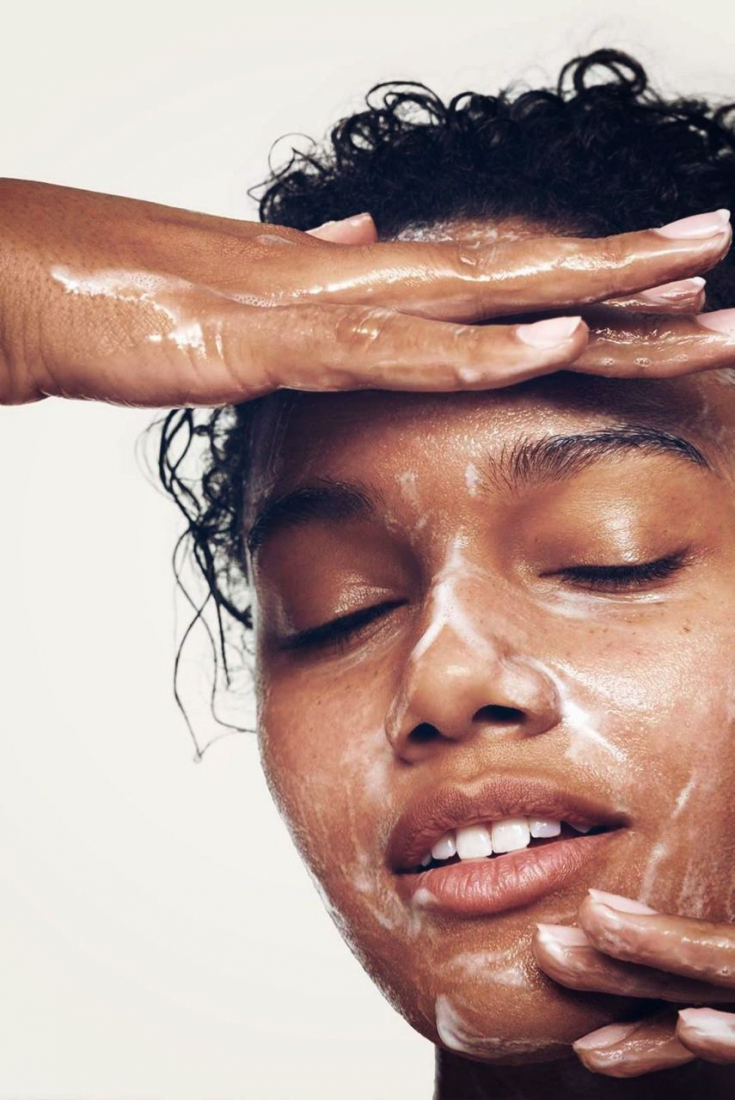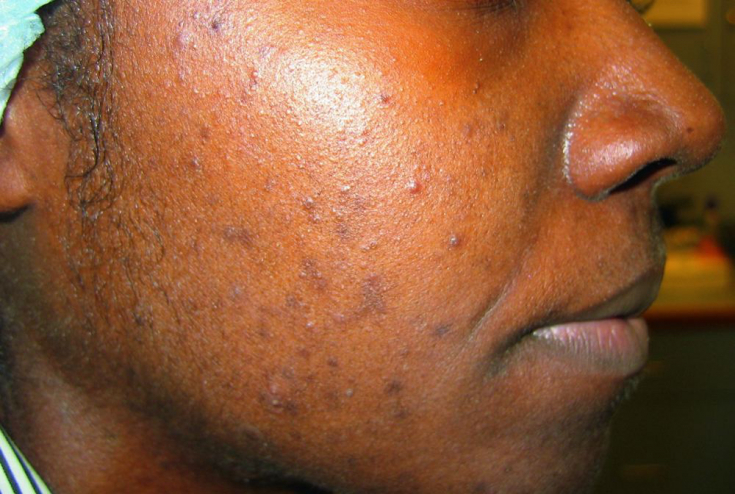Chemical peeling is the application of one or more exfoliating agents to the skin, resulting in controlled damage and destruction of one or more parts of the epidermis or dermis. Peelings have several different indications, but the overall goal of treatment is to achieve a well-groomed and young street. However, the benefits of chemical peels vary across ethnic and racial groups, and optimal cosmetic peeling for darker skin can be more challenging.
In the article on estet-portal.com you will learn how to achieve a positive aesthetic result with peels for darker skin.
- Peelings in general
- TCA Peel for Black Patients
- Combination peels
- Using Glycolic Acid on Patients with dark skin
- Conclusion
Peeling overview
The Fitzpatrick Skin Classification System links skin color to UV response, and this relationship is useful because skin color is known to determine a patient's suitability for skin rejuvenation procedures. Fitzpatrick skin types I-III were considered ideal skin types for these procedures, while types IV-VI were considered more challenging due to the high incidence of post-inflammatory hyperpigmentation and the possibility that the procedure would permanently change skin color.

The practitioner must remember that 100% safe chemical peels or no procedure exists, however the risk can be significantly reduced by procedures that give the clinician more control over peel-related variables. Controlling variables can result in a more predictable depth of acid penetration, thereby increasing the likelihood of good results and avoiding complications.
Using peels to combat hyperpigmentation.
Control of peeling parameters is of paramount importance for achieving a successful cosmetic result.
Indications for superficial peeling may include acne, dull complexion, hyperpigmentation, prevention/treatment of photoaging.
Peels that are best for dark skin include 10-35% TCA, 30-70% glycolic acid, 20-30% salicylic acid in ethanol or paste, Jessner peel, retinoic acid, phytic peels, vitamin peels C and their combinations.
Control of peel parameters is of paramount importance to achieve a successful cosmetic result in order to avoid post-eruptive pigmentation, which is a common and annoying problem for more darker skin types.
TCA peel for dark skinned patients
TCA is the gold standard for all chemical peels. The most important variable in the quality and safety of a TCA peel procedure is the depth of acid penetration.
Accurate assessment of skin type as well as skin condition before and after the procedure also play an important role in the results. TCA peels at 10%, 35%, and 50% concentrations were classified as superficial, medium, and deep, respectively, with the erroneous assumption that a certain concentration penetrates to a certain depth. The concentration of TCA only determines the rate at which the acid penetrates the skin, higher concentrations penetrate faster. Any concentration can penetrate to any depth. The therapeutic and effects of TCAs are directly related to their concentration.
Peeling for dark skin consists of TCA in a low concentration (15-20%) and a post-peel mask. Adding the right amount of 50% TCA to the stock solution can convert TCA into stabilized TCA.
TCA can be combined with ascorbic acid / citric acid (which enhance and smoothen TCA penetration), cocamides (which protect the skin and increase the effectiveness of saponins).
TCA does not need to be neutralized as it self-neutralizes, but a post-peel cream or mask with a strong antioxidant cream can be applied. The cream immediately stops the burning sensation resulting from the application of TCA, providing a much-desired calming effect on the skin.
Combined peels
The peel that improves melasma is a combined peel or mask with azelaic acid, kojic acid, phytic acid, vitamin C and retinoic acid.
This peel can be applied on the first day for 6-8 hours or on the first day for 4-5 hours and then applied 2-3 hours weekly. Then a cream with the same ingredients but in a lower concentration is applied twice a day for two weeks (at least 3 hours per application), then once a day for at least a year.
Salicylic acid peel at 20-25% in ethanol is one of the most beneficial peels used for any skin type to treat acne, once every 10-14 days.
Salicylic acid does not require neutralization, it
With regard to alpha hydroxy acids, the best known of them is glycolic acid, which is the smallest of all hydroxy acids. The mechanism of action of glycol peels used at concentrations of 50-70% is not fully understood, but it is believed that they loosen the stratum corneum.

Features of peeling with salicylic acid. Glycolic acid penetrates unevenly and if the clinician is not careful, deeper penetration into the dermis may occur if not monitored or properly neutralized, especially for thin skin. Glycolic acid can be used alone or in combination with other chemicals.
Between peels, before and after peels, the patient should apply daily home care creams such as moisturizers and antioxidant creams with vitamin E to optimize the positive
Conclusion Chemical peeling is a relatively inexpensive procedure that every specialist, dermatologist and dermatologist-surgeon can master, knowing which peel is right for the patient. Before the peeling procedure, it is required to collect a detailed medical history and begin a course of procedures with tar low concentrations of acids, this will help the specialist to choose further treatment tactics and prevent complications.
Watch us on YouTube.





